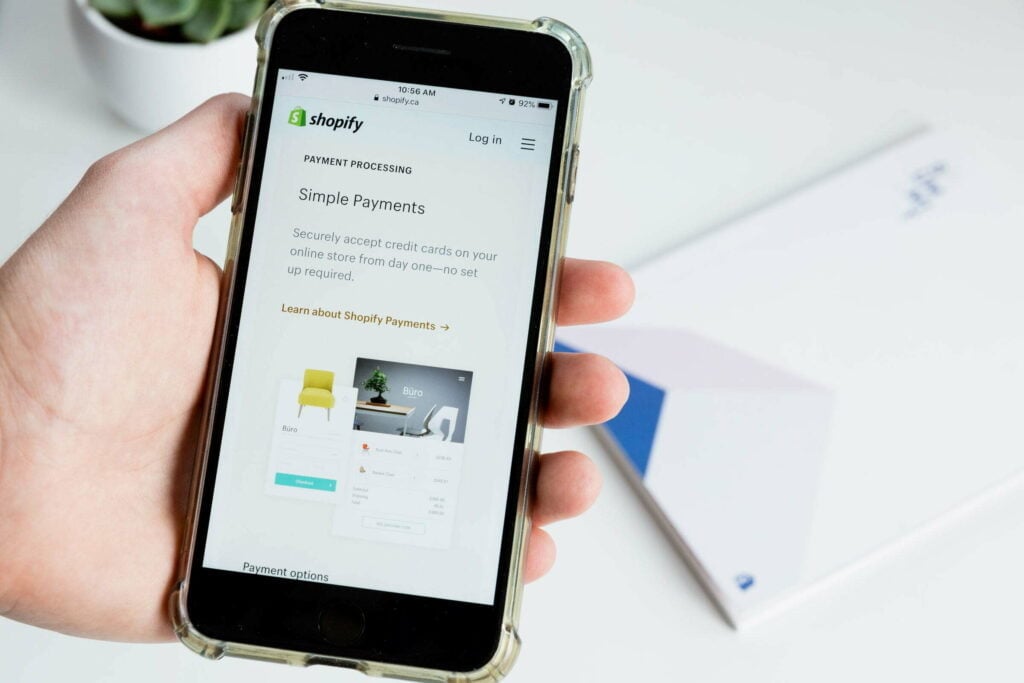Spring is in the air, and that can only mean one thing: it’s time to start thinking about new business ventures!
But where should you start? If you’re looking for a sunny place to set up shop, we’ve got just the spot for you:
Australia! Here’s a step-by-step guide on How to start an eCommerce business in Australia.

What kind of business suits eCommerce?
There are several different types of businesses that are well suited to eCommerce platforms.
At the top of this list is retail businesses, which typically rely on distribution networks to bring their products to customers.
In an eCommerce business model, such companies can distribute goods directly to consumers and bypass retailers entirely.
Additionally, many companies specialize in selling niche goods that would otherwise be difficult to find in brick-and-mortar stores.
Whether it’s clothing, art supplies, or specialty foods and drinks, these products can often find more success online than in traditional retailers.
Finally, eCommerce has even proven successful for services industries like travel and entertainment booking, allowing customers to browse and choose from more extensive options than would likely be available in a local storefront.
Thus, regardless of the type of business you’re looking to start up, chances are that you’ll find success by embracing the power of eCommerce.
Benefits of having an eCommerce Store:

You’re open 24/7
One of the biggest benefits of having an eCommerce store is that you’re open 24 hours a day, seven days a week.
It means your customers can shop anytime convenient for them without worrying about store hours.
Additionally, customers can shop from anywhere in the world, which gives you a much larger potential customer base than a brick-and-mortar store.
No geographical limitations
Another benefit of having an eCommerce store is that there are no geographical limitations.
A brick-and-mortar store is limited to the geographical area that it is located in, but an eCommerce store can reach customers all over the world.
It gives you a much larger potential customer base and allows you to sell your products to people in different countries.
Lower overhead costs
Another benefit of having an eCommerce store is that it has lower overhead costs than a brick-and-mortar store.
You don’t have to worry about renting or maintaining a physical space, and you don’t have to hire as many employees.
It can save you a lot of money, which can be used to invest in other areas of your business.
Increased flexibility
Another benefit of having an eCommerce store is that it is more flexible than a brick-and-mortar store.
You can change your product offerings anytime without worrying about inventory or physical space constraints.
You can also experiment with different marketing and pricing strategies without as much risk as you would with a brick-and-mortar store.
You can reach a global market.
Finally, one of the most significant benefits of having an eCommerce store is reaching a global market.
With a brick-and-mortar store, you are limited to the people who live near your location. But with an eCommerce store, anyone with internet access can buy your products.
It gives you a much larger potential customer base and allows you to sell your products to people in different countries.
How to start an eCommerce Business in Australia:
Find a niche.
Australia is a big country with a lot of people and a lot of businesses. You’ll need to find a way to stand out from the crowd. Do some research and find a niche market that you can tap into.
Develop a business plan.
Once you’ve found your niche, it’s time to develop a business plan. It will help you structure your business and figure out how to make it successful.
Get some capital.
Starting an eCommerce business can be costly, so you’ll need to make sure you have enough money to get things off the ground. There are a few ways to get funding, such as through investment capital or government grants.
Choose your platform.
It is one of the most critical steps in starting your eCommerce business. You’ll need to decide which platform to use to sell your products or services online. There are a few different options available, so do research and select the one that’s right for you.
Market Yourself:
To start an eCommerce store, focusing on marketing yourself and your products is essential. It means building a strong brand presence online through social media, paid advertising campaigns, email marketing, and other channels.
One key strategy is to leverage the power of user-generated content by encouraging customers to leave reviews, share photos, and engage with your brand on social media.
Additionally, it is essential to have a robust website that showcases your products and communicates your value proposition.
By carefully crafting every aspect of your business from the ground up, you can successfully establish yourself as a leading eCommerce retailer in your industry. Good luck!
Start selling!
Once everything is set up, it’s time to sell your products or services online! You’ll need to promote your business and drive traffic to your website or store to make sales.
Use social media, marketing campaigns, and good old-fashioned word-of-mouth to get people interested in what you’re selling!
Stay organized & keep track of inventory.
For your eCommerce business to be successful, you’ll need to stay organized and keep track of your inventory levels at all times.
It can be accomplished by using an inventory management system or accounting software. By staying on top of things, you’ll be able to avoid stockouts and keep your customers happy.
Setting up your eCommerce business store in Australia
Choose your platform
The first step to setting up your eCommerce store is choosing the platform you will use. There are a number of different options available, and the one you choose will depend on several factors, including the type of products you sell, your budget, and your technical expertise. Some popular eCommerce platforms include Shopify, WooCommerce, and Magento.
Choose your domain name.
Once you’ve chosen your platform, it’s time to choose your domain name.
It is the address that customers will use to find your store online, so it’s essential to choose something easy to remember and relevant to your business.
You can usually purchase your domain name through your eCommerce platform or a separate domain name registrar such as GoDaddy or Namecheap.
Set up payment processing
To start selling products online, you need to set up payment processing. It involves choosing a payment gateway (such as PayPal or Stripe) and setting up an account.
You will also need to obtain a merchant account from a bank or financial institution to process credit card payments.
Choose your shipping methods.
Another important aspect of setting up your eCommerce store is choosing your shipping methods. You will need to decide how to ship your products (such as via UPS, FedEx, or USPS) and how much you want to charge for shipping. You will also need to obtain licenses or permits to ship your products.
Stock your store
Once you have everything else set up, it’s time to start stocking your store! You will need to source products from suppliers and manufacturers and then list them for sale on your website. Make sure to take good-quality photos of your products and write detailed product descriptions to attract customers.
Promote your store
Finally, it’s time to start promoting your store once you have everything set up and ready to go! You can do this in several ways, including social media marketing, search engine optimization (SEO), and pay-per-click (PPC) advertising.
Is WooCommerce better than Shopify?

There is no clear answer to whether WooCommerce or Shopify is the better e-commerce platform. Both options offer robust features and strong support for online businesses, making it difficult to choose between them.
On the one hand, WooCommerce tends to be more customizable than Shopify, with a wide range of plugins and extensions that help you create the perfect storefront for your business.
On the other hand, Shopify is often considered simpler to use and easier to set up, making it an excellent option for first-time entrepreneurs or small business owners with limited technical expertise.
Ultimately, the choice will depend on your individual needs and preferences, but WooCommerce and Shopify are excellent options for building an effective online store.
Frequently Asked Questions:
How do I start an online store?
The first step is to choose the platform you want to use. Shopify, WooCommerce, and Magento are all popular options. Once you’ve chosen your venue, you’ll need to choose a domain name and set up payment processing. Then you can start stocking your store and promoting it to potential customers.
What do I need to set up an online store?
At a minimum, you’ll need a domain name, eCommerce platform, payment gateway, and shipping methods. You may also require licenses or permits to ship your products.
How much does it cost to set up an online store?
At a minimum, you’ll need a domain name, eCommerce platform, payment gateway, and shipping methods. You may also require licenses or permits to ship your products.
How do I promote my online store?
Several ways to promote your online store include social media marketing, search engine optimization (SEO), and pay-per-click (PPC) advertising. You can also try traditional marketing techniques such as print ads or direct mail.
The Bottom Line:
There’s never been a better time to start an eCommerce business in Australia! By following these simple steps, you can be on your way to becoming the next big thing Down Under! So what are you waiting for? Get started today!




